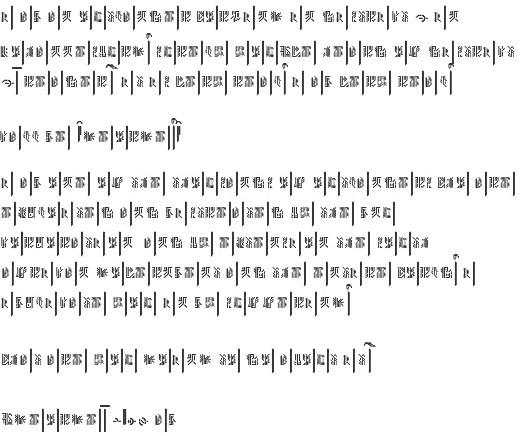The cinema has made four full attempts to bring the future crashing headlong into South Africa. Three of them are by Neill Blomkamp.
-
The first is a quasi-infomercial, with no stated title (de facto: Tetra Vaal), that situates robot policemen inside the townships. It’s still great six years later.

I sent Blomkamp some mail ages ago asking about using the video for a demonstration project, to which he responded by top-posting in ALL CAPITALS a demand that I delete my own files and call him up to talk about it. The video is still online, of course.
-
Another short film, Alive in Joburg, posited a hive of kilometre-wide spaceships hovering over Johannesburg, bleeding the city dry of its power and water even as mouth-tentacled aliens symbolically live like Xhosas in squalid townships. Subtle.
-
An execrable Canada/ZA television coproduction, Charlie Jade, not only was criminally miscast but was fundamentally incomprehensible. (Story editor: Denis McGrath. Spared of any involvement: Neill Blomkamp.)
-
And now finally District 9, which seems to expand the trope of Alive in Joburg to feature-film length.
Situating the future in South Africa is a great idea. The clash of centuries, races, and species surely must make for good drama. (Why would aliens land on the White House lawn? Necessarily?) But if you’re making an entire feature film about alien invasions, obviously you need alien languages. And here my worries begin.
Rather a lot of criticism has been written on the exolinguistics of science fiction. First we have to accept the idea that aliens would communiate with language and not a form of telepathy. Then we must accept the use of sound waves instead of infrared light or just gestures (or scents). We accept that translation from alien communication to human understanding were somehow possible. (The machine translation in the misbranded horror movie Mars Attacks seems like a rationally predictable outcome.)
But if we further accept, just for now, the status of J.R.R. Tolkien as a writer in the science-fiction genre, nobody has ever done it better. Really, what is the competition?
-
Star Wars got it right half the time (the half that used Quechua in a backward mask) and wrong the rest of the time. (Here, “wrong”’means “implausible” or “too heavily influenced by English.”)
-
Klingon is simply a joke, but what do you expect from the National Captioning Institute? (Their staff linguist invented it and wants you never to forget it. Or the fact that he’s a linguist. But who isn’t?)
-
The Star Trek episode “Darmok” enjoyed a full analysis at the linguistics blog with the delightful title Tenser, Said the Tensor.
-
One of the myriad industrially-Canadian science-fiction programs – Earth: Final Conflict, shot just around the corner from me – tried very hard to make the Taelon language plausible. The show did many things right, as it turns out.
-
Casting one of the few tall masculine ginger actors extant, Kevin Kilner.
-
Sliding a shiv into the ribs of postmodern architecture. Whenever anyone tries to describe a crazy new building to you, before you even conjure a mental image just ask “Does it look like the Taelon embassy?”
-
There are few subtler and more watchable humanoid-alien portrayals than those of the Taelons, especially the feminine-influenced Leni Parker and masculine-influenced Anita La Selva. And when they threw subtlety out the window, even then it was still watchable – Zo’or’s declaration “I will be the last! Taelon! standing!” is one I hold close to my heart.
As explained in a CBC Radio segment, Taelon derives from a philosophy of quantum mechanics; Christian Bök (yes) is the inventor. It’s really quite a triumph structurally; actors’ vocal performance was variable, and the writing system was a bit of a joke.
-
And on D-9? This 19-second snippet (MP3) of the trailer, from an ill-written and -performed alien-interrogation scene (really a cliché itself), reveals the spoken dialect as a sequence of orcan (Xhosan?) clicking with a few suprasegmental groans and whistles thrown in. District 9 or Day of the Dolphin? Inauspicious.
The writing system is much worse – a half-assed cipher that amalgamates Thai, Chinese, and English. (English comes through in the form of punctuation, up to and including an equivalent for three dots as ellipsis. Three dots simulate an ellipsis, but here they are transliterated straight.) You can make these correspondences yourself in minutes by studying the fake blog, done entirely in Flash, that was set up for the movie. This is hardly as complicated as decoding the Rosetta Stone.


(Isn’t it convenient how it reads left to right in nice discrete characters? Are these aliens more human than they’d like to admit?)
Even the font sucks. You’d be hard pressed to find a Japanese or Chinese typeface so poorly constructed.
I hope it’s third time lucky for plucky young Blomkamp. But I’m not optimistic about the prospects of success of his, or his team’s, foray into South African exolinguistics.